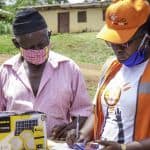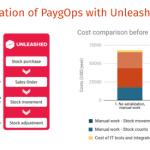What Will Last Mile Distribution Look Like in 2025? Six Predictions for an Emerging Sector
Beneficial household products such as solar lights, improved cookstoves, water purifiers, nutritional supplements and agricultural inputs can play a significant role in achieving the Sustainable Development Goals. But these products can’t make an impact if they don’t reach the last mile customers who could benefit from them. And since they often live in rural communities with limited transport and telecommunications infrastructure, and have low, fluctuating or unpredictable income, these customers are difficult and expensive to reach.
The Global Distributors Collective (GDC) is a collective of last mile distributors (LMDs) that aims to overcome this challenge, and make last mile distribution the first priority. We have over 140 members – companies that cumulatively have sold more than 13 million life-changing products to last mile households in more than 30 countries around the world. This week, we released the very first State of the Sector report, based primarily on interviews with 72 of these last mile distributors. The report shines a light on the sector to better understand the markets for these products, the customers being reached – and the business models used to reach them.
Below we’ll reflect on the key trends, challenges and opportunities in last mile distribution, and propose a vision for what the sector will look like in 2025.
There will still be people at risk of being left behind
According to the World Bank, if current trends continue there will still be half a billion people living on less than $1.90 a day in 2030. The people who lack access to electricity, clean cooking facilities, clean drinking water or adequate nutrition will have the same needs over the next decade as they do today. Beneficial household products will continue to play a vital role in meeting those needs, providing an interim solution and an immediate improvement in quality of life for those who cannot be reached with more costly services or infrastructure in the foreseeable future.
E-commerce will be the fastest growing distribution channel
Today LMDs mainly use sales agent networks, retail outlets and partners such as community-based organisations to reach customers, with 80% of LMDs surveyed by the GDC using more than one of these distribution channels.
But with the spread of affordable smartphones, internet and mobile money, e-commerce models targeting the last mile will emerge, including innovative hybrid models which combine online and offline sales. Some LMDs, such as GDC member Last Mile for the BoP, operating as ShopIt, are already pivoting to embrace e-commerce, following in the footsteps of companies like StoreKing, IPAY India and Jumia. ShopIt’s mobile app enables retailers in South Africa to compare products and prices from wholesalers, and to purchase stock which is then delivered in a matter of hours. There are still challenges to be overcome – such as the lack of trust in online transactions, digital illiteracy and the absence of platforms in local languages. But e-commerce could ultimately give last-mile consumers more choice, save them time, and help make beneficial products more affordable by reducing the need for costly “below-the-line” marketing.
LMDs will have access to a broader range of higher-quality, more affordable products
In 2025 manufacturers will have developed better, more affordable products. While in some product categories these gains will be incremental, in others – such as electronics (like low-cost tablets) and off-grid appliances (like refrigerators and fans) – the gains will be significant. This will give LMDs greater choice, and with cheaper products to offer they will penetrate even more deeply into low-income markets.
We also expect to see more wholesalers enter the market and provide end-to-end importation services, which will help LMDs by making stock more readily available in-country on more favourable terms. Increased local manufacturing and assembly – particularly in the cookstove sector – will similarly improve stock availability and reduce the uncertainty that LMDs face around supply. More in-country manufacturing will benefit LMDs in other ways, by bringing down transportation costs, shortening working capital cycles and – as cookstove company BURN Manufacturing found when they set up a manufacturing facility in Kenya in 2013 – enabling faster iteration on product design in response to consumer feedback.
Digital innovation will enhance sales efficiency
The use of pay-as-you-go (PAYG) hardware and software is common in the off-grid solar sector, and it is beginning to spread to other product categories, such as cookstoves, fuels and water purifiers. This year, GDC member ATEC* launched the first-ever PAYG biodigester. We expect PAYG to become more common across product categories, helping to address affordability barriers and increasing the number of LMDs offering consumer financing (currently provided by 69% of LMDs surveyed). Increased uptake of mobile money will decrease the cost of providing consumer financing, enhancing sales efficiency. Beyond PAYG, we expect more and more LMDs to start using software to monitor and manage more areas of their businesses – including customers, inventory, agents, retailers and after-sales services.
Digital innovation could also create opportunities for LMDs to offer microentrepreneurs “pay-per-gig” roles, like Jumia’s affiliate marketing program J-Force, through which individuals earn commissions on sales of the company’s products. By recruiting, training and potentially even managing networks of promoters or sales agents virtually, LMDs may be able to reach new markets and reduce costs.
Better data will help to attract investment
Investors have typically struggled to engage with the LMD sector because of a lack of reliable business performance data and benchmarks. With the increased use of software platforms to manage sales, repayments and customer relationships, it will become easier for investors to verify LMD performance and to more accurately predict future cash flows, sales and creditworthiness. In one example of this approach, SIMA Funds and Angaza are partnering on a Distributor Financing Fund, whereby LMDs using Angaza software give their consent for Angaza to share their business performance data with SIMA to price a loan. More such initiatives are expected to help address some of the critical funding gaps in this sector.
Growing specialisation will enable LMDs to build more strategic partnerships
The LMD sector is continuing to unbundle, with companies increasingly specialising in one or two pieces of the last mile distribution puzzle. This is giving LMDs access to a greater range of hardware, software and third-party services, and enabling them to customise their businesses and serve niche markets more effectively than ever before.
Unbundling will also lead to more strategic partnerships that can unlock cost-efficiencies or economies of scale, reducing isolation and the “reinventing of the wheel.” In particular, we will likely see increased collaboration between LMDs: limited direct competition amongst these companies means there is more appetite for collaboration than in more competitive markets. GDC members are already collaborating to reduce costs in areas such as the development of marketing materials, the training of sales agents, and the provision of after-sales services. With increased networking and matchmaking opportunities, greater sector visibility and enhanced market intelligence, these kinds of partnerships are likely to proliferate.
In addition, LMDs are starting to build longer-term, more strategic partnerships with manufacturers, including through exclusivity agreements and franchisee models. As noted by Dalberg and Lighting Global, some are seeing LMD partnerships as a route to scale, supporting them to succeed rather than using them to “prepare the ground” for their own proprietary distribution networks. LMD partnerships with suppliers may also deepen as manufacturing practices around e-waste improve, potentially creating new business opportunities for LMDs to take back waste from consumers. Some LMDs are already doing this on a small scale, but often at their own cost.
Conclusion: Forecasting a Bright Future for Last Mile Distribution
Despite the significant challenges and risks inherent in last mile distribution, the outlook for the sector is positive. The international development community is increasingly recognising the role that LMDs have to play in reaching the SDGs and ensuring that nobody is left behind. This is likely to translate into improved access to both public and private finance for LMDs, and more support in areas such as training, partnership facilitation and innovation.
Our State of the Sector report highlights a number of innovative new approaches to financing the LMD sector. Specialist intermediary investors such as VentureBuilder in the off-grid solar sector are providing a combination of early-stage equity and intensive technical assistance. Established funds such as the Africa Enterprise Challenge Fund and the World Bank’s forthcoming Regional Off-Grid Electrification Project (ROGEP) in West Africa are making smaller grants and loans available than ever before (thereby removing existing barriers around high levels of minimum investment), while accepting higher transaction costs and levels of risk. Meanwhile, the USAID mission in Uganda and the Scaling Off-Grid Energy Grand Challenge for Development are developing a results-based financing mechanism which incentivises companies to reach last mile customers using a “last mile index.”
As the visibility and profile of last mile distribution improves, stakeholders will be able to make more informed decisions, to invest in more appropriate ways and at a larger scale, and to develop interventions that address key market barriers. This will lead to a boom in sector growth, and ultimately will improve the lives of some of the world’s most underserved people.
Emma Colenbrander is Head and Charlie Miller is a senior advisor at the Global Distributors Collective (GDC).
The GDC is hosted by Practical Action, alongside implementing partners Hystra and BoP Innovation Center. This article includes contributions from Lucie Klarsfeld, Emile Schmitz, Gerwin Jansen and Simon Brossard.
Photo courtesy of BoP Innovation Center.
- Categories
- Energy, Telecommunications, Transportation



